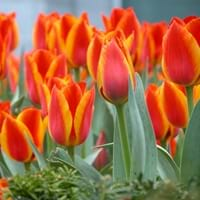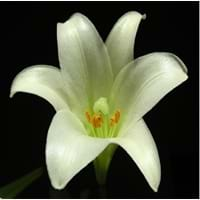Color
Orange, Pink, Purple, Red, Yellow
Orange, Pink, Red, White, Yellow
Color Meaning
Orange - Satisfaction and Passion, Pink - Sensitivity and Love, Purple - Elegance and Pride, Red - Courage, Desire and Love, Yellow - Happiness and Friendship
Orange - Satisfaction and Passion, Pink - Sensitivity and Love, Red - Courage, Desire and Love, White - Purity and Innocence, Yellow - Happiness and Friendship
Fragrance
Floral
Aromatic
Line
Not Available
Not Available
Silhouette
Not Available
Not Available
Blossom Texture
Not Available
Not Available
Form
Not Available
Not Available
Sunlight
Full Sun, Part Sun
Full Sun, Part Sun
Watering
Enough
Diligently
Essential Fertilizers
Nitrogen
Lime stone
Common Pests and Diseases
List of Pests
Aphids, Mites, Nematodes, Slugs, Snails, Spider Mites
Aphids, Mites, Slugs, Snails, Thrips
List of Diseases
Gray Molds, Root Rot, Stem Rot
blight, Gray Molds, Nematodes, Root Rot, Rust
Bloom Time
Spring Season
All Summer Season, Fall Season, Spring Season
Origin
China, Greece, Iran, Persia, Siberia, Turkey, Ukraine
Asia, Europe, North America, Northern Hemisphere
Interesting Facts of
- Tulip is the national flower of Turkey and Afghanistan and its name is originated from Turkish word 'Turbin'.
- On Valentine's Day Tulip is the second most popular flower to send after roses.
- In Chinese culture it signifies being forever in love.
- Pollens of Lily can be poisonous for cats.
Lifespan
Annuals - complete its full life cycle in one growing season, Perennials - a plant that lives for three or more years
Perennials - a plant that lives for three or more years
Flower Meaning
Not Available
Astrological Flower
Not Available
Birth Month Flower
Not Available
Flower Availability
Not Available
Uses
Not Available
Not Available
Health Benefits
Best remedy for Cough & Cold, Reduces risk of cancer, Used for sinus pain, hay fever and headache
Best remedy for Cough & Cold, improves the functioning of the lungs, kidneys, and stomach
Medicinal Uses
Have diuretic properties, It has anti-septic properties
Natural Healer, prevents the formation of scar tissue, treats burns
Culinary Uses
NA
Used in salads, soups and sandwiches
Design Uses
Not Available
Cosmetic Uses
Best for Dry sensitive skin, Used in creams, hand lotions and in essential oils, Used in Perfumes
Lightens the skin, Used in Perfumes, Utilized in making essential oils
Occasional Uses
Father's Day, Friendship Day, Mother's Day, Wedding
Anniversary, Friendship Day, Funerals, Sympathy, Wedding
Allergy
NA
Asthma, Headache, Itchy eyes, Nausea, Runny nose, Sneezing
Common Name
Not Available
Scientific Name
Tulipa
Lilium
Sub kingdom
Tracheobionta
Tracheobionta
Super Division
Spermatophyte
Spermatophyta
Division
Magnoliophyta
Magnoliophyta
Class
Liliopsida
Liliopsida
Family
Liliaceae
Liliaceae
Sub Family
Lilioideae
Lilioideae
Genus
Not Available
Not Available
Number of Species
Not Available
Not Available
More about Tulip and Lily Facts and color
You must be curious to know more about Tulip and Lily facts and color. flowers.comparespecies.com will let you know all the Interesting Facts about Tulip and Lily. Tulip comes in Orange, Pink, Purple, Red, Yellow colors whereas Lily flowers are with Orange, Pink, Red, White, Yellow colors. Other Tulip and Lily facts will definitely amuse you.
Tulip and Lily growing conditions
Absolute growing condition is the only key to keep plants in good health and in good shape. Let’s learn about essential Tulip and Lily growing conditions. Tulip requires Full Sun, Part Sun and Enough watering with 6.00 of Sandy soil. Lily needs Full Sun, Part Sun and Diligently watering with 5.50 of Loamy soil. Get other Tulip and Lily facts in the sections below.





